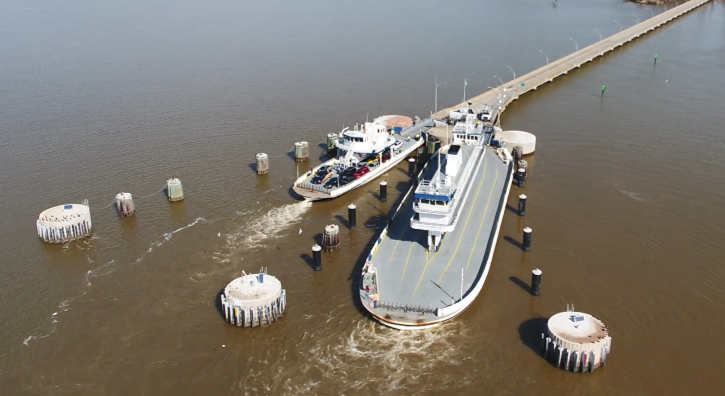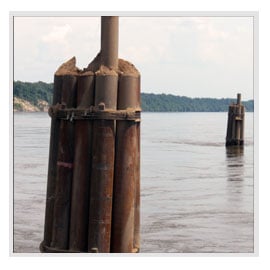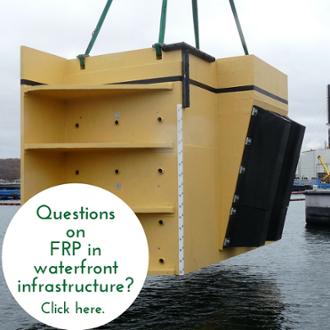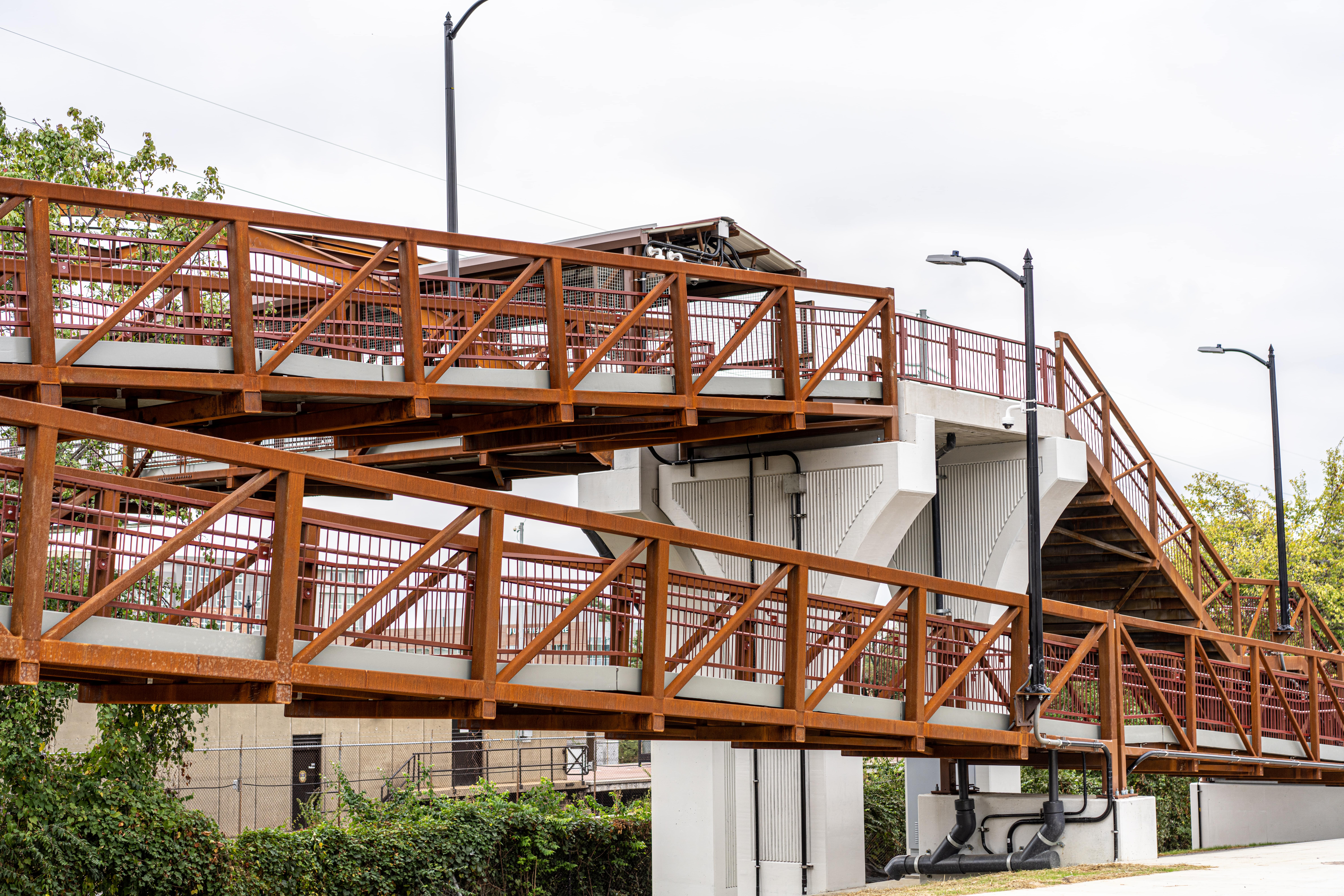Quadripods, tripods and clusters…kind of makes you wonder if someone forgot to run spell check. After all, isn’t a quadruped a four-legged animal? And tripod shouldn't be confused with cephalopod, a moniker for octopuses, squids and cuttlefish. We're also not referring to a three-legged camera stabilizer. Actually, the three terms (quadripods, tripods and clusters) describe different types of dolphins. No, not the small, bottlenose marine mammals we all know and love. We're referring to "a man-made marine structure that extends above the water level and is not connected to shore." Structural dolphins shun the shore while guiding, berthing or mooring ships at ports, docks or jetties.

Dolphins can be paired with seawalls or docks, where they offer structural protection. They also help secure vessels (barges, for example) during loading or unloading. Typically, dolphins are fabricated using a cluster of timbers or steel tube-shaped piles. Each dolphin is usually composed of as little as three piles to as many as 50 or more. Dolphins can also be built as a steel platform that encloses a mixture of reinforced concrete and piles.
When it comes to protecting valuable infrastructure, ferry boats and passengers, performance relies heavily on the quality of the pilings, which, as previously discussed, are often called structural dolphins. They work by transferring the full load of a structure to layers of soil and rock beneath the earth to increase the dock’s stability.
Fender protection systems and ferry terminal guidewalls consist of pilings (fence posts) with horizontal wales (cross beams.) At the beginning and end of these systems are the structures that handle the big initial impacts: Structural Dolphins.
There a number of factors involved in finding the best design and material for dolphins
- Impact energy
- Soil conditions for driving piles
- Presence of passengers on vessels
- Width of navigable waterway
- Proximity to surrounding structures

Wood Piling vs. FRP Piling
Key factors that set wood and fiber-reinforced polymer (FRP) pilings apart from one another: Longevity, performance and cost.
Wood does not offer the same degree of longevity as FRP when it comes to dock construction. FRP resists decay and can stand up to common problems like corrosion and insect infestation. Wood, on the other hand, can invite a host of problems. Rot frequently impacts dock construction and can lead to collapse, and dock owners must constantly monitor for insect problems or corrosion in the hopes of catching issues before they compound and cause serious damage.
The design flexibility of FRP materials enables engineers to create dolphins with the exact performance needed for the conditions. Size, wall thickness, stiffness and strength can be optimized. This typically means that only one large FRP piling is needed at each dolphin location instead of clusters of wood pilings.
Cost has two components: construction and maintenance. Driving fewer dolphins using a crane on a barge in less the ideal conditions is much lower overall construction costs than driving all the wood pilings. The maintenance and replacement costs required for damaged or deteriorated wood are sizable. Even concrete and steel piling systems can’t escape the high costs of fixer-upper projects. According to the Army Corps of Engineers (UACE), replacing and maintaining deteriorated wood, concrete, and steel piling systems within the U.S. costs as much as $1 billion annuallyAlthough FRP often necessitates a higher initial investment than other materials, working it into dolphin piling construction pays off in the construction stage and in the long run. FRP pilings have been proven to last as much as twice or three times longer than their wood counterparts.
Advanced materials are providing new benefits to a number of industries from recreation and construction to vehicles and yes…marine applications like the dolphin. A single large diameter composite FiberPILE can replace an entire cluster of traditional piles. The benefits? Simple. Lower installation costs, greater energy absorption capacity and longer service life.
Piling Installation
Piling installation can be completed in a number of ways. Three of the most popular options are:
- Jetting
- Hammering
- Drilling
The jetting process uses a high-pressure water pump to blow a deep hole into the ground, where a piling will be set. After this, the piling will be placed into the hole. Sand is packed back around the piling and fills in the remaining space in the hole.
Hammering is ideal for situations involving high numbers of rocks. The hammering process forces small and medium rocks out of the way and can even break through a thin layer of clay. Large rocks will still present a problem, as most of them are far stronger than the pilings.
Drilling is the only method that guarantees proper ground penetration in areas with sizable amounts of large rocks. Drilled pilings are actually installed inside of these rocks. Typically, they’re installed at least four to five feet into the rock.
Learn More About Composite Advantage’s FRP Dolphins
If you’re interested in learning more about the benefits of using FRP to make your dolphins, you’re in luck. Those on the hunt for more information can download our new Dolphin Infographic. You’ll be able to snag the lowdown on how FRP pilings can benefit your organization, regardless of industry or application.
Editor's Note: This post was originally published in June 2016 and has been completely revamped and updated.


